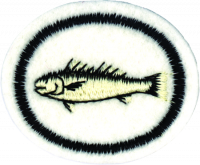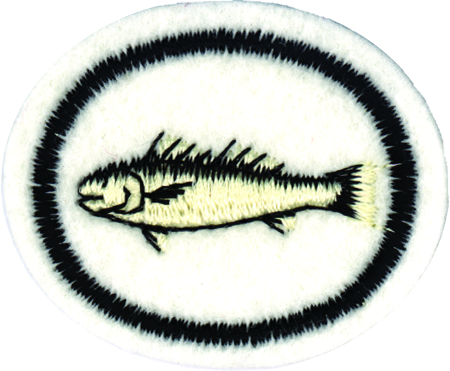Distinctions JA/Poissons/Réponses
1
2
poissons d’aquarium).
- a. Expliquer leur façon de frayer.
- b. Connaître le pays dans lequel ils vivent.
3
4
4a
4b
4c
4d
4e
4f
4g
4h
4i
4j
5
- a. Des zones tropicales
- b. Des zones tempérées
The largest bacterial populations are found in the filter; efficient filtration is vital. Sometimes, a vigorous cleaning of the filter is enough to seriously disturb the biological balance of an aquarium. Therefore, it is recommended to rinse mechanical filters in an outside bucket of aquarium water to dislodge organic materials that contribute to nitrate problems, while preserving bacteria populations. Another safe practice consists of cleaning only one half of the filter media every time the filter or filters are serviced.
Biological Loading
Biological loading is a measure of the burden placed on the aquarium ecosystem by its living inhabitants. High biological loading in an aquarium represents a more complicated tank ecology, which in turn means that equilibrium is easier to perturb. In addition, there are several fundamental constraints on biological loading based on the size of an aquarium. The surface area of water exposed to air limits dissolved oxygen intake by the tank. The capacity of nitrifying bacteria is limited by the physical space they have available to colonize. Physically, only a limited size and number of plants and animals can be fit into an aquarium while still providing room for movement.
Calculating aquarium capacity
An aquarium can only support a certain number of fish. Limiting factors include the availability of oxygen in the water and the rate at which the filter can process waste. Aquarists have developed a number of rules of thumb to allow them to estimate the number of fishes that can be kept in a given aquarium; the examples below are for small freshwater fish as larger freshwater fish and most marine fishes need much more generous allowances.
- 3 cm of fish length per 4 liters of water (i.e., a 6 cm-long fish would need about 8 liters of water).
- 1 cm of fish length per 30 square centimeters of surface area.
- 1 inch of fish length per gallon of water.
- 1 inch of fish length per 12 square inches of surface area.
Experienced aquarists warn against applying these rules too strictly because they do not consider other important issues such as growth rate, activity level, social behavior, and so on. To some degree, establishing the maximum loading capacity of an aquarium depends upon slowly adding fish and monitoring water quality over time, essentially a trial and error approach.
Factors affecting capacity
Though many conventional methods of calculating the capacity of aquarium is based on volume and pure length of fish, there are other variables. One variable is differences between fish. Smaller fish consume more oxygen per gram of body weight than larger fish. Labyrinth fish, having the capability to breathe atmospheric oxygen, are noted for not needing as much surface area (however, some of these fish are territorial, and may not appreciate crowding). Barbs also require more surface area than tetras of comparable size.
Oxygen exchange at the surface is an important constraint, and thus the surface area of the aquarium. Some aquarists go so far as to say that a deeper aquarium with more volume holds no more fish than a shallower aquarium of the same surface area. The capacity can be improved by surface movement and water circulation such as through aeration, which not only improves oxygen exchange, but also the decomposition of waste materials.
The presence of waste materials presents itself as a variable as well. Decomposition is an oxygen-consuming process, therefore the more decaying matter there is, the less oxygen as well. Oxygen dissolves less readily in warmer water; this is a double-edged sword as warmer temperatures make more active fish, which in turn consume even more oxygen. Stress due to temperature changes is especially obvious in coldwater aquaria where the temperature may swing from low temperatures to high temperatures on hotter days.
6
This can be done by the individual Pathfinder at home, or as a group in a classroom or the regular Pathfinder meeting place. If keeping fish as a group, be sure that everyone gets to participate in all aspects of their care. The likelihood of success will be maximized by being sure to follow the guidelines set out in requirement five.
7
7a
During the time that aquarium plants are exposed to light, carbon dioxide is absorbed and oxygen is expelled. The gases enter the plant mainly through the leaves. The carbon dioxide and water are chemically combined with the chlorophyll in the plant to produce simple sugars. The sugars are converted to starch and oxygen is produced as the by-product. The light in your tank is most important with respect to the chlorophyll. The chlorophyll is what absorbs the light to create the process of photosynthesis. The aquarium plant naturally absorbs more nutrients through the roots during this time.
7b
Respiration is the opposite of photosynthesis. When the lights are out, the photosynthesis process ceases but the respiration continues. The aquarium plant will use oxygen to break down food substances, which is released as energy in the form of heat. Carbon dioxide is produced and expelled as a result of this process. So, when the lights are on the plants absorb carbon dioxide and expel oxygen. When the lights are out the aquarium plants absorb oxygen and expel carbon dioxide.
7c
Overfeeding is one of the major causes of fish loss. Overfeeding promotes fish waste (ammonia) to build up to a harmful level. It is best to feed your betta only enough food that it can eat in five minutes. If food is seen sitting on the bottom of the aquarium or bowl, the fish have been overfed.
7d
Rapid changes in water temperatures stress your fish. when fish are stressed they are more susceptible to disease and sickness.
7e
Fish need plants in the wild for shelter, food, filtration, and oxygen. In an aquarium you supply their main source of food
Notes
When to use fish or fishes. Use fish when talking about a school of the same species. Use fishes when talking about schools of different species. Any time you are talking about more than one species, use fishes. &


